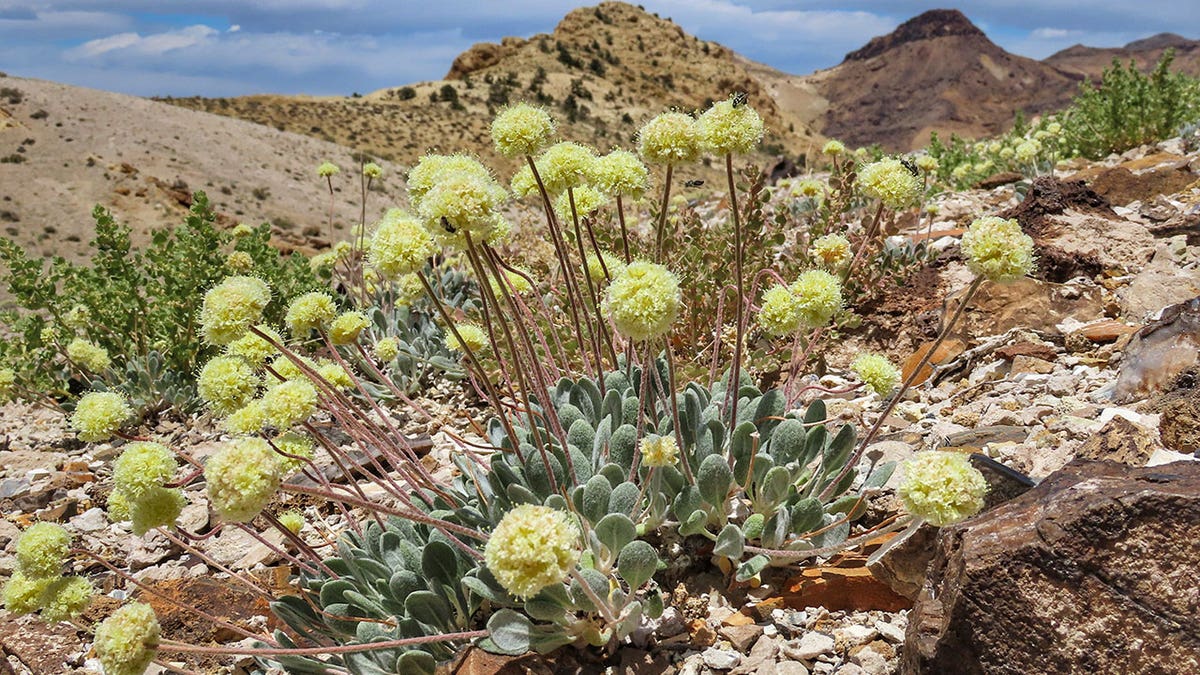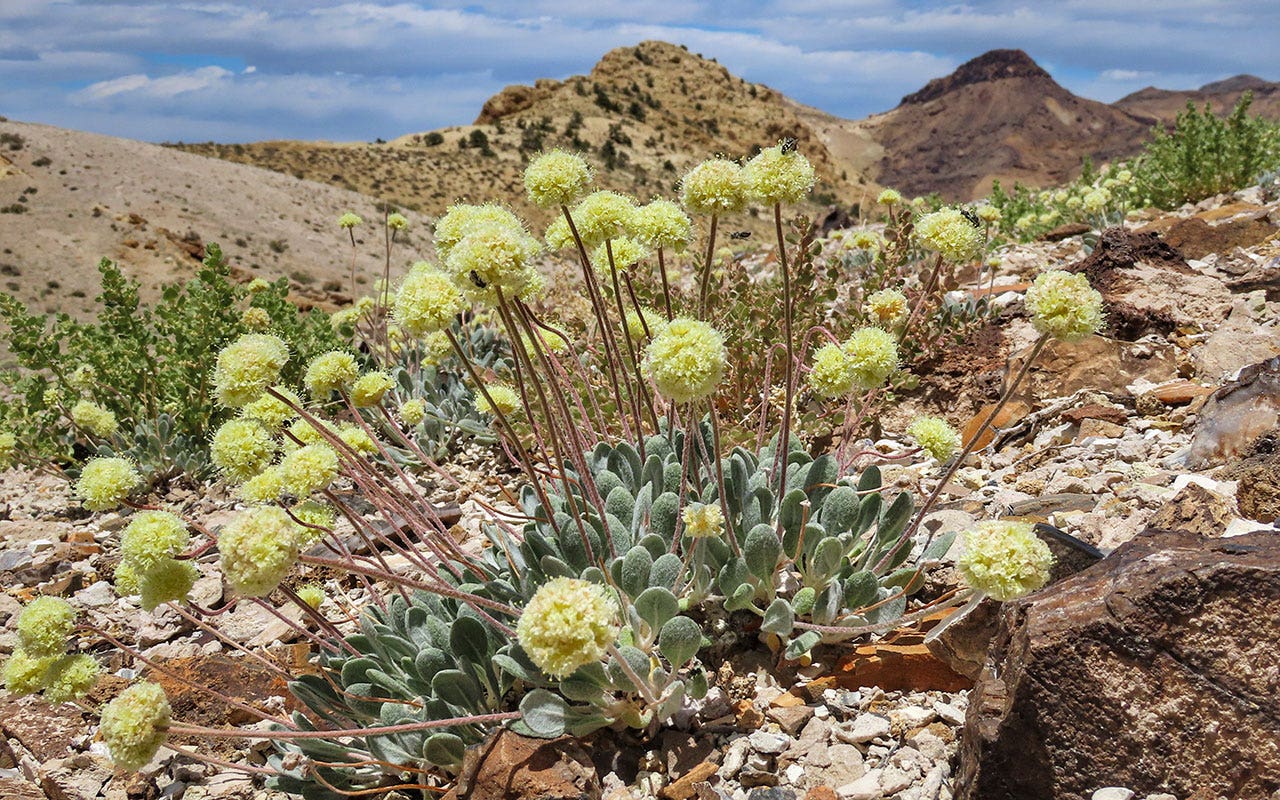- The Biden administration has launched an expedited environmental review for the Rhyolite Ridge mine in Nevada.
- Environmentalists vow to challenge the mine's approval, arguing it violates the Endangered Species Act and threatens the survival of an endangered wildflower.
- Nevada is currently home to the only existing lithium mine in the United States, with another under construction.
The Biden administration has taken an important step in its accelerated environmental review of what could become the third lithium mine in the United States, amid anticipated legal challenges from environmental advocates over the threat they claim to represent for an endangered Nevada wildflower.
The Bureau of Land Management last week released more than 2,000 pages of documents in a draft environmental impact statement for the Rhyolite Ridge mine. Lithium is a key metal for making batteries for electric vehicles – a centerpiece of President Joe Biden's “green energy” agenda.
Officials from the bureau and its Interior Department trumpeted the news, saying progress in reviewing the proposed lithium-boron mine “represents another step by the Biden-Harris administration to support responsible national development of critical minerals to power clean energy.” energy saving.”
LESSER KNOWN ENDANGERED SPECIES IN THE UNITED STATES THREATENED BY FUNDING DISPARITIES
“Cooperation among federal agencies to effectively resolve issues while protecting vulnerable species and other irreplaceable resources is exactly how we will need to move forward if we are to produce these essential minerals in the United States,” said Secretary Steve Feldgus. Deputy Assistant Secretary of the Interior for Land and Mineral Management.

This photo shows a Tiehm buckwheat plant near the site of a proposed lithium mine in Nevada, May 22, 2020. The Biden administration took an important step in its expedited environmental review of what is next for becoming only the third lithium mine in the United States. as conservationists fear it will lead to the extinction of the endangered Nevada wildflower near the California border. (Patrick Donnelly/Center for Biological Diversity via AP, File)
Environmentalists vowing to fight the mine say it is the latest example of an administration flouting U.S. protections for native wildlife and rare species in the name of slowing climate change by reducing dependence on fossil fuels and reducing greenhouse gas emissions.
Patrick Donnelly, Great Basin director at the Center for Biological Diversity, described it as “greenwashing extinction.” The nonprofit conservation group first filed a petition in 2019 for federal protection of the rare flower, Tiehm's buckwheat, which grows near the California border.
“We believe the current protection plan would violate the Endangered Species Act, so if BLM approves it as proposed, we would almost certainly challenge it,” he told The Associated Press this week last.
SCIENTISTS SAY ENDANGERED SPECIES ACT IS AS ESSENTIAL AS EVER AFTER 50 YEARS OF SUCCESS
Nevada is home to the only existing lithium mine in the United States, and another is currently under construction near the Oregon line, 220 miles north of Reno. By 2030, global demand for lithium is expected to have increased sixfold compared to 2020.
The office said it released the draft review and opened public comments until June 3 for the new mine after Ioneer Ltd., the Australian mining company that has for years planned to mine lithium at that site, adjusted its latest plan to reduce destruction of critical resources. habitat for this plant, which does not exist anywhere else in the world.
Bernard Rowe, chief executive of Ioneer, said lithium production could begin as early as 2027. He said the company had spent six years adjusting its plans so the mine could co-exist with the factory, which it had invested $2.5 million in conservation efforts and committed an additional $1. million dollars per year to ensure the protection of the plant and its surrounding habitat.
“Rhyolite Ridge will help accelerate the transition to electric vehicles and ensure a cleaner future for our children and grandchildren,” said James Calaway, Executive Chairman of Ioneer.
In addition to reducing encroachment on the 6-inch-tall wildflower with yellow and cream flowers, the strategy includes a controversial propagation plan to grow and transplant flowers nearby — which conservationists say , will not work. .
The plant grows in eight subpopulations that together cover about 10 acres, an area equal to the size of about eight football fields. They are located halfway between Reno and Las Vegas, in a sort of desert oasis for plants and the insects that pollinate them.
The Fish and Wildlife Service added the flower to the U.S. endangered species list on December 14, 2022, citing mining as the greatest threat to its survival.
Less than a week later, the government issued a formal notice of intention to begin work on the proposed environmental impact study. Three weeks later, the Energy Department announced a $700 million conditional loan to Ioneer for the mining project that it said could produce enough lithium to support the production of about 370,000 electric vehicles per year for four decades.
The Center for Biological Diversity said a series of internal documents obtained from the Bureau of Land Management through a Freedom of Information Act request show the administration rushed its review of the mine.
Scott Distell, BLM project manager in charge of the review, raised concerns about the accelerated timeline in an email to his district manager when it was suddenly accelerated to December 2023.
“This is a very aggressive schedule that deviates from other similar project schedules completed recently,” Distell wrote in the Dec. 22 email.
CLICK HERE TO GET THE FOX NEWS APP
The draft environmental impact statement outlines three different options for the project, including a “no action alternative” that would mean no mine would be built. The one the bureau said it preferred calls for Ioneer's protection plan to allow direct destruction of about 22 percent of the plant's habitat in the 910 acres (368 hectares) that the Fish and Wildlife Service has designated as habitat. criticism when he listed it as endangered. That's down from estimates of 38% in an earlier version of the plan.
“For an extremely rare species confined to such a small area, no destruction of its critical habitat is acceptable,” said Naomi Fraga, director of conservation at the California Botanic Garden.
Donnelly points to the Endangered Species Act's requirement that federal agencies consult with the Fish and Wildlife Service whenever a project could affect a threatened or endangered species to ensure it does not will not result in “the destruction or adverse modification of designated critical habitat.”
“Reducing habitat destruction of this rare plant from 38 percent to 22 percent is like cutting off one leg instead of both,” Donnelly said. “They still deliver a fatal blow to this precious and rare wildflower.”
